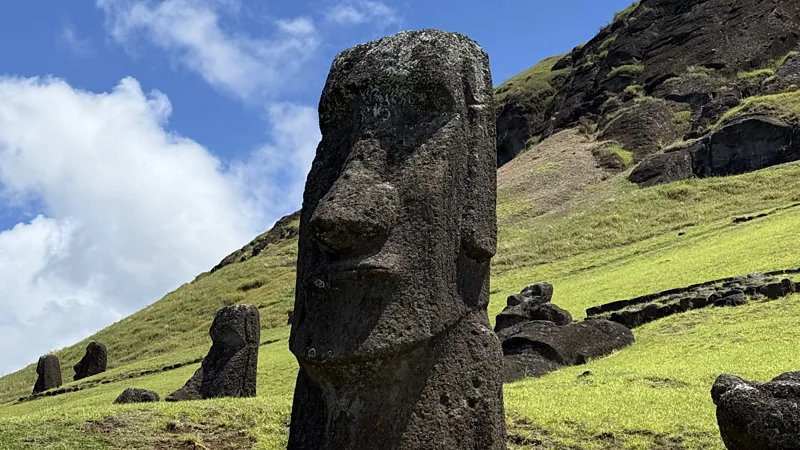Is this the end for Easter Island's moai statues?

In News: Easter Island’s Moai Statues Under Threat
Context:
Easter Island’s world-famous moai statues, carved between 1100–1600 CE by the Rapa Nui people, are facing accelerated deterioration due to natural and anthropogenic causes, raising concerns about their preservation.About Moai:
- Massive monolithic human figures carved from volcanic tuff.
- Represent ancestors and chiefs (notably Hotu Matu’a, first settler).
- Around 1,000 statues, with ~200 placed on stone platforms (ahu).
- Most statues face inland, symbolising protection of local communities.
- In 1995, Rapa Nui National Park (containing the moai) was designated a UNESCO World Heritage Site.
Current Threats:
- Climate Change: Rising sea levels, extreme waves, and sporadic but intense rainfall.
- Weathering: Salt crystallisation, wind, rain, and sun causing cracks, flaking, and cavities.
- Wildfires: In 2022, ~80 moai damaged in Rano Raraku quarry.
- Human & Animal Activity: Vehicle accidents, livestock rubbing against statues, and bird droppings accelerating erosion.
Conservation Efforts:
- Past efforts include restorations in 1970s–90s, tsunami-damaged sites (Tongariki) rebuilt, and chemical waterproofing (2003).
- Ongoing: 3D scanning, chemical treatments (with support from University of Florence), seawall reinforcements, and UNESCO emergency funding (2023).
- Debate: Whether to let statues naturally decay (part of their “life cycle”) or actively conserve as heritage.
Significance:
- Cultural: Represent Rapa Nui’s Polynesian ancestry, belief system, and artistic achievements.
- Economic: Attract over 100,000 tourists annually, vital for the island’s economy.
- Global: Among the heritage sites most threatened by climate change (UNESCO, 2016).
Updated : 4 July 2025 ; 10:30 AM | BBC